Text


From its foundation in 1919 onwards the Bauhaus was a preferred and frequent target for nationalist and National Socialists due to its international orientation, alleged communist activities and overall avant-garde position. At the same time its students were regarded as immune to totalitarianism and National Socialism in particular. Five years after the Bauhaus centenary the Klassik Stiftung Weimar reviews the relationship between Bauhaus and the Nazi regime and does away with a number of long-held beliefs. Until 15 September the tripartite exhibition at Museum Neues Weimar, Bauhaus Museum and Schiller-Museum for the first time sheds light on an uncomfortable part of the school’s history.
Alongside the exhibition Hirmer published the present and very insightful catalogue, edited by Anke Blümm, Elizabeth Otto and Patrick Rössler, that discusses the manifold hostilities brought forward by conservatives and nationalists but also examines the dealings of former Bauhaus students and teachers with the Nazi regime. The first third of the catalogue is thus devoted to a chronological history of the Bauhaus’ and its opposition and how the school’s situation gradually worsened. A harbinger of what was looming was the Weimar iconoclasm of 1930: the newly elected government of the federal state of Thuringia included the NSDAP and Wilhelm Fricke became minister of the interior and public education. In this capacity he released a decree against progressive art and culture with which he e.g. forced the Weimar art collections to remove their strategically built collection of Bauhaus artworks.
In the following and larger part the catalogue collects a total of 58 biographies of former students and teachers and how they fared under the totalitarian regime: included are of course the well-known stories of figureheads like Gropius, Albers and Mies van der Rohe but also those of e.g. Fritz Ertl who drew the plans for the Auschwitz extermination camp and Friedl Dicker who was killed in the very same camp. At the same time others like photographer Otto Umbehr (Umbo) fared well as regime-linked contractors.
The collected biographies again demonstrate that history isn’t a black or white business but spiked with shades of grey as proves the fact that a Bauhaus education can’t immunize individuals from adapting to an inhuman regime. A pivotal book and exhibition!
89 notes
·
View notes
Text
Wiebke Siem. Das maximale Minimum: Salzburg bis 12.03.2023
Wiebke Siem. Das maximale Minimum: Salzburg bis 12.03.2023
Eine wunderbare Ausstellung des Museums der Moderne Mönchsberg in Salzburg stellt uns das Werk der Künstlerin Wiebke Siem unter dem Titel “das maximale Minimum” vor. Wiebke Siem – 2014 mit dem renommierten Goslarer Kaiserring ausgezeichnet – wurde in den 1990er-Jahren mit raumgreifenden Installationen bekannt, in denen sie Alltagsdinge wie Kleidungsstücke, Schuhe, Taschen oder Spielzeug…
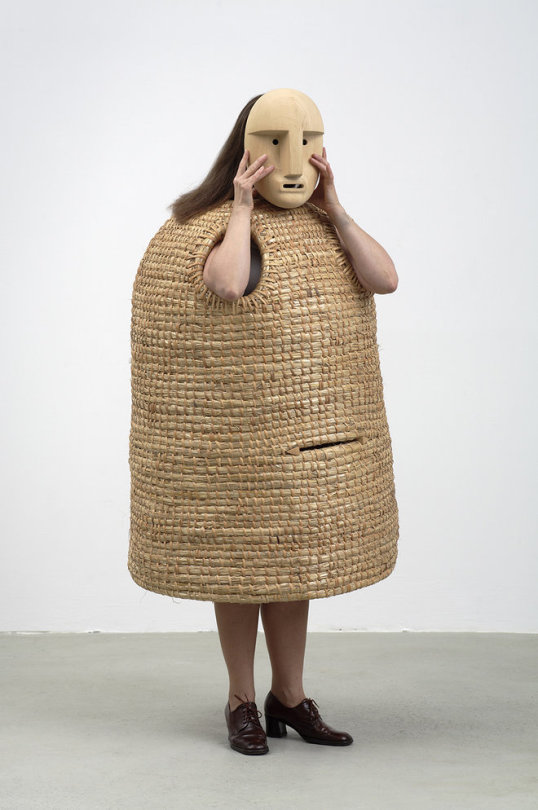
View On WordPress
#Alltagsdinge#Das maximale - The Maximum Minimum#Ethnologie#Figuren#Goslarer Kaiserring#Hirmer Verlag#Installationen#Kulturgeschichte#Mönchsberg#rollenbilder#Salzburg#Wiebke Siem
0 notes
Text

Fresco from the Sala di Grande Dipinto, Scene VIII in the Villa de Misteri, Pompeii
Filippo Coarelli (ed.), Pompeji (Munich: Hirmer Verlag, 2002)
78 notes
·
View notes
Text
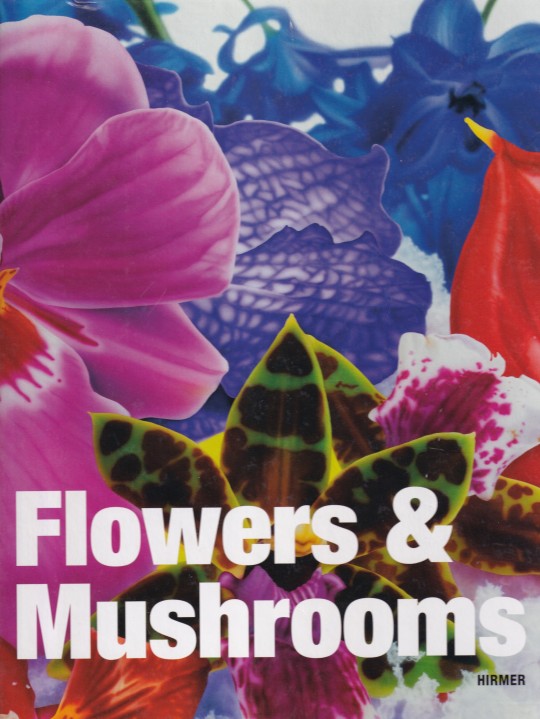


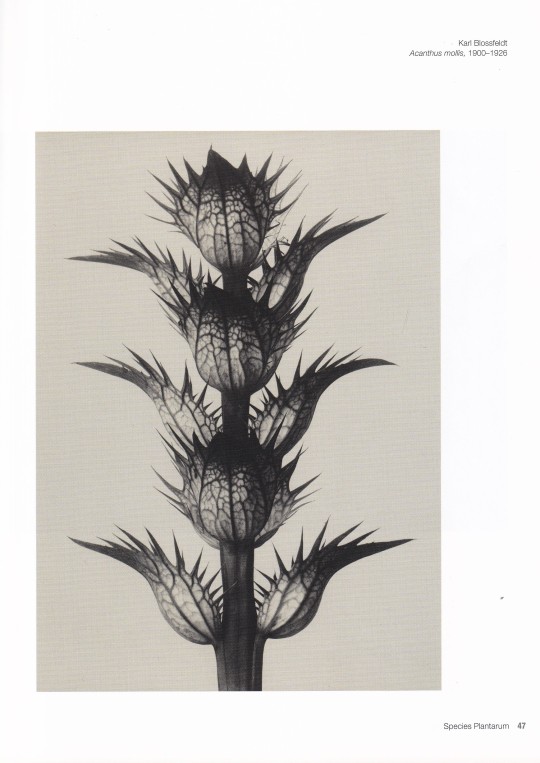



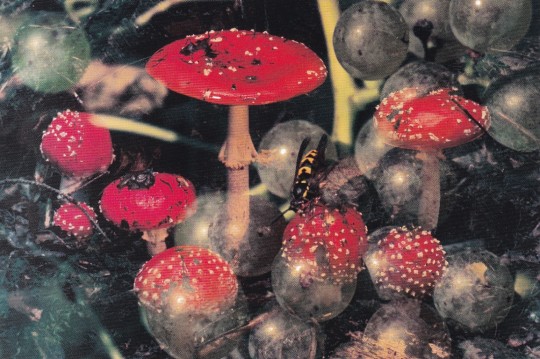


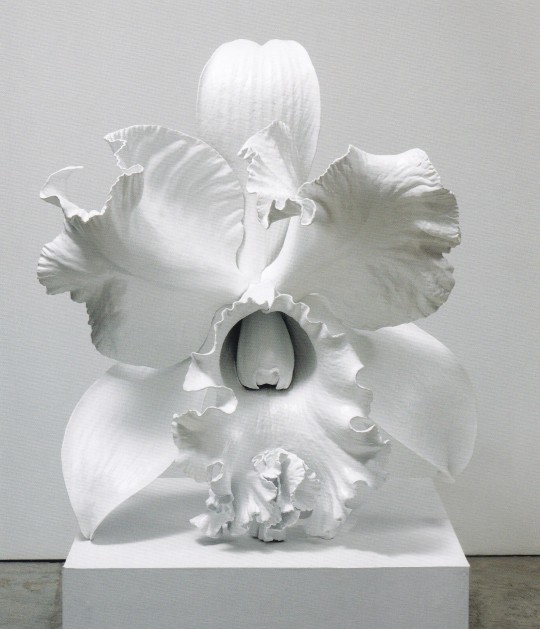

Flowers & Mushrooms
Essays by M. Harder, M. Moschik, T. Teufel, P. Weiermair, V. Ziegelmaier et al.
Hirmer Verlag, München 2013, 256 pages, 24x28,5cm, ISBN 9783777421605
euro 40,00
email if you want to buy [email protected]
Flowers and Mushrooms takes readers inside the rich and diverse symbolism of its eponymous subjects. Flowers have at times stood for freshness and fertility, transience and death. In addition to its ubiquitous and much-maligned image as a hallucinogen, the mushroom has throughout history signified health and life and served as an important symbol within religious ritual. In recent years though, flowers and mushrooms have become a focus in contemporary art, with artists manipulating the many clichés that surround them and adapting their representation to produce new and unexpected layers of meaning, from social criticism to feminism and the conceptual framework of the erotic. Among the leading plant portraitists are the Swiss duo Peter Fischli and David Weiss, whose series of forty photographs epitomize the potential to shed new light on familiar objects by presenting them in unusual context.
The exhibition at MdM Museum der Moderne - Salzburg presents works from Nobuyoshi Araki, Anna Atkins, Eliška Bartek, Christopher Beane, Karl Blossfeldt, Lou Bonin-Tchimoukoff, Balthasar Burkhard, Giovanni Gastel, Georgia Creimer, Imogen Cunningham, Nathalie Djurberg, Hans-Peter Feldmann, Peter Fischli/David Weiss, Sylvie Fleury, Seiichi Furuya, Ernst Haas, Carsten Höller, Judith Huemer, Dieter Huber, Rolf Koppel, August Kotzsch, David LaChapelle, Edwin Hale Lincoln, Chen Lingyang, Vera Lutter, Katharina Malli, Robert Mapplethorpe, Elfriede Mejchar, Moritz Meurer, Paloma Navares, Nam June Paik, Marc Quinn, Albert Renger-Patzsch, Zeger Reyers, Pipilotti Rist, August Sander, Gitte Schäfer, Shirana Shahbazi, Luzia Simons, Thomas Stimm, Robert von Stockert, William Henry Fox Talbot, Diana Thater, Stefan Waibel, Xiao Hui Wang, Andy Warhol, Alois Auer von Welsbach, Michael Wesely, Manfred Willmann, Andrew Zuckerman.
07/03/24
#Flowers & Mushrooms#exhibition catalogue#MdM Museum der Moderne - Salzburg 2013#Araki#Blossfedt#Gastel#Fischli/Weiss#LaChapelle#Mapplethorpe#Sander#Warhol#Haas#Nam Jun Paik#photography books#fashionbooksmilano
12 notes
·
View notes
Text
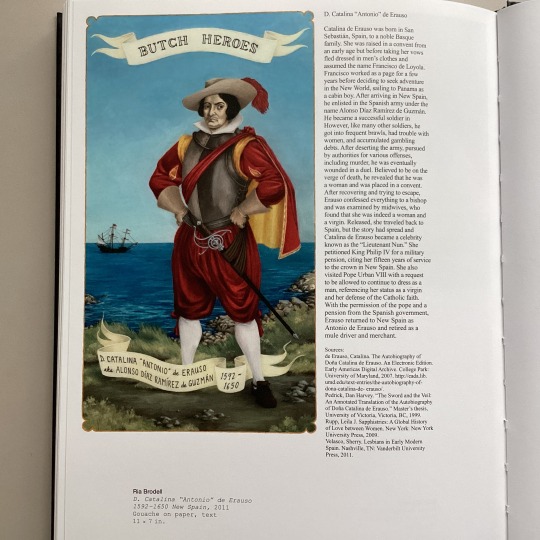
Ria Brodell’s “Butch Heroes” series offers portraits of heroic figures whose stories are seldom told. They are individuals who were assigned female at birth but whose gender presentation was more masculine than feminine, who did not want to enter into heterosexual marriage, and who often faced dire punishment for being themselves. Brodell (they/them) is a non-binary trans artist based in Boston.
Here’s one example from Brodell’s “Butch Heroes” series.
Image: D. Catalina “Antonio” de Erauso, 1592-1650, New Spain, 2011 Gouache on paper, text, 11 x 7 in.
Biography of Catalina de Erauso (Edited version)
Catalina de Erauso was born in San Sebastián, Spain, to a noble Basque family and was raised in a convent from an early age. Before taking her vows, she fled dressed in men’s clothes and assumed the name Francisco de Loyola. Francisco worked as a page for a few years before deciding to seek adventure in the New World, sailing to Panama as a cabin boy. After arriving in New Spain, Francisco enlisted in the Spanish army under the name Alonso Díaz Ramírez de Guzmán and became a successful soldier. However, Alonso got embroiled in much trouble, including trouble with women. After deserting the army, Alonso was pursued by authorities for various offenses and eventually wounded in a duel. On the verge of death, Alonso revealed that he was a woman. Alonso recovered and was examined by midwives who confirmed that she was a woman and a virgin. Eventually, Catalina de Erauso became a celebrity known as the “Lieutenant Nun.” She petitioned King Philip IV for a military pension and visited Pope Urban VIII with a request to be allowed to continue to dress as a man. She was granted both requests. Drauso returned to New Spain as Antonio de Erauso and retired as a mule driver and merchant.
Queer holdings : a survey of the Leslie-Lohman Museum collection Edited by Gonzalo Casals and Noam Parness. Munich : Hirmer Verlag, 2019 HOLLIS number: 99154382110903941
#LGBTQHistoryMonth#LGBTQHistory#LGBTQ#Butch#ButchHeroes#ButchHistory#Queer#NonBinary#NonBinaryTrans#NonBinaryArtist#RiaBrodell#HarvardFineArtsLibrary#Fineartslibrary#Harvard#HarvardLibrary
19 notes
·
View notes
Text
Erste Literaturempfehlung (20.10.23) ✨
Hallo ihr Lieben! Heute gibt es die erste Literaturempfehlung:
Der Bildband "Textures", welcher von Joseph L. Underwood und Tameka N. Ellington im Jahre 2020 herausgegeben wurde.
Underwood, J.L., Ellington, T.N. (2020). Textures - The history and art of black hair/ Kent State University Museum. Hirmer Verlag München.
"Der Band vereint Recherchen in den Feldern Geschichte, Mode, Kunst und visueller Kultur, die sich der hair story von Menschen afrikanischer Abstammung widmen. Thematisiert wird das Selbstverständnis der "People of Colour" bis in die unmittelbare Gegenwart, mit einem Schwerpunkt auf die Bevölkerung in den Vereinigten Staaten. Kämme, Pflegeprodukte und Gerätschaften aus der Sammlung des Haarpioniers Willie Morrow finden sich neben Werken von Künstlerinnen und Künstlern wie Sonya Clark, Lorna Simpson, Zanele Muholi und James Van Der Zee gestellt. Die Vorliebe für glattes Haar, soziale Hierarchie durch Hautfarbe, die Macht und Politik der äußeren Erscheinung werden in die komplexe Geschichte von black hair eingeordnet. Damit leistet das Buch einen wegweisenden Beitrag zur Geschichte von Kultur und Alltagsleben der afroamerikanischen Bevölkerung" (Quelle: Textures: The History and Art of Black Hair | Hirmer Verlag)
Der Bildband taucht in die Geschichte und Kunst des Black Hair ein. Hier werden wissenschaftliche Stimmen und alltägliche Diskriminierungserfahrungen der B(I)PoC-Community laut. Der Kampf um das Black Hair, sowohl körperlich als auch seelisch, wird in Form von künstlerischen Darstellungen erzählt.
Die Künstler*innen berührten mich zutiefst, sie schaffen Awareness für Black Hair und sorgen für Empowerment innerhalb der Community.

Bildquelle: Textures: The History and Art of Black Hair, Ellington, Underwood (uchicago.edu)
Die offizielle Webseite der Ausstellung "Textures": TEXTURES – the history and art of Black hair (wordpress.com)
Videos zu "Textures" findet ihr unter:
The Conception of TEXTURES: the history and art of Black hair - YouTube
TEXTURES: the history and art of Black hair exhibition Tour - YouTube
Vielen lieben Dank! #deine-krone-zählt 👑
Textverfasser*in: deine-krone-zählt
0 notes
Text
KRITIK: Eckhardt Köhn + Susanne Wartenberg - Die Fotografinnen Nini und Carry Hess
KRITIK: Eckhardt Köhn + Susanne Wartenberg – Die Fotografinnen Nini und Carry Hess
Eckhardt Köhn und Susanne Wartenberg sind die Herausgeber:innen des letzten Jahres im Hirmer Verlag erschienenen Buch Die Fotografinnen Nini und Carry Hess. Auf ungefähr 250 Seiten im Din A4 Format wird das Leben und die Werke der beiden Frankfurter Fotografinnen dargelegt und somit zwei herausragende Künstlerinnen porträtiert. Nini und Carry Hess, zwei Schwestern, geboren Ende des 19.…

View On WordPress
0 notes
Text
Literaturkritik.de: "In beunruhigender Ruhe" – Mit „Giorgio de Chirico – Magische Wirklichkeit“ erscheint ein beeindruckender Band über den italienischen Künstler, dessen metaphysische Bildwelt noch heute fasziniert. – eine Rezension von Klaus Hammer
Literaturkritik.de: “In beunruhigender Ruhe” – Mit „Giorgio de Chirico – Magische Wirklichkeit“ erscheint ein beeindruckender Band über den italienischen Künstler, dessen metaphysische Bildwelt noch heute fasziniert. – eine Rezension von Klaus Hammer
Literaturkritik.de: “In beunruhigender Ruhe” – Mit „Giorgio de Chirico – Magische Wirklichkeit“ erscheint ein beeindruckender Band über den italienischen Künstler, dessen metaphysische Bildwelt noch heute fasziniert. – eine Rezension von Klaus Hammer https://literaturradiohoerbahn.com/wp-content/uploads/2021/08/litkrit-de-chirico-Magische-Wirklichkeit-upload.mp3 Im Kriegsjahr 1917 – de Chirico…

View On WordPress
#Annabelle Görgen#de Chirico#Ferrara#Gegenwartsliteratur#Hirmer Verlag#In beunruhigender Ruhe#Klaus Hammer#Literaturkritik.de#Magische Wirklichkeit#Paolo Baldacci#Paris#Puppen#Rezeption#Surrealisten#Susanna Bummel-Vohland#Turin
0 notes
Photo

Boris Mikhailov, “Salt Lake” series, 1986
In 1986, Boris Mikhailov travelled to the shores of a lake in the south of Ukraine. His father, who had lived in the region in the 1920s, remembered it as a favourite spot with the locals, who were convinced its warm, salty water had healing properties. The photographer was curious to find out whether the place was still there. He discovered that while habits had not changed, the lake was now surrounded by factory chimneys, brick warehouses and industrial-sized pipes discharging waste into the water. Throughout the year, families would meet on the shores of the lake. At first glance, it looks like a Soviet version of Baden-Baden.
Boris Mikhailov captures a succession of strange scenes in which we see a carefree people bathing in murky waters, seemingly indifferent to the chaotic landscape around them. There are crowds of thickset men along with women clad in both bikinis and headscarves, apparently enjoying the moment to the full. Bodies lie stretched out to sunbathe, while a group of women chat happily. The calm exuded by this series becomes a pictorial element in its own right, reminiscent of some of Henri Cartier-Bresson’s photographs from the time of the first paid holiday leave in France, or George Seurat’s painting A Sunday Afternoon on the Island of La Grande Jatte.
Salt Lake portrays a little-known, almost secret Soviet Union. This is hardly surprising, given that like much of Mikhailov’s work, this series was undertaken clandestinely. The environment is one in which the population appears to be indifferent to its environment, or at least puts up with it for want of anything better, in order to make the most of their freedom, however transient. Did these people have a choice as to where they could relax? Did they wonder about whether there could be anything better anywhere else—or could this freedom be the very best kind of all?
Discovering this work today engages us in a work of remembrance—perhaps akin to that of the photographer himself, retracing his father’s steps. One’s attention is irresistibly drawn to the date, one year before the Chernobyl disaster and three years before the collapse of the Soviet system. History has endowed Salt Lake with the status of a valuable testimony, embodying the artist’s perceptive and timeless view of his day.
“There’s a kind of interplay between the old and the new going on here. […] It was an outworking of an old idea I’d entertained before: we’re right there, and yet not there. It’s both today—and a long long time ago.“*
*Boris Mikhailov, I’ve been here once before / J’ai déjà été ici un jour, David Teboul. Munich: Edition Hirmer Verlag GmgH / Paris: Edition Les Presses du réel, 2011
10 notes
·
View notes
Text

Two pages from the book Faces. The Power of the Human Visage. Hirmer Verlag GmbH Hardcover – 25 May 2021
9 notes
·
View notes
Text
https://www.hirmerverlag.de/de/titel-1-1/antoine_watteau-2204/
シャルロッテンブルグ宮殿のヴァトー展行きたいが、海外なんて無理ー!なのでカタログが出たら取り寄せるよ。
1 note
·
View note
Text
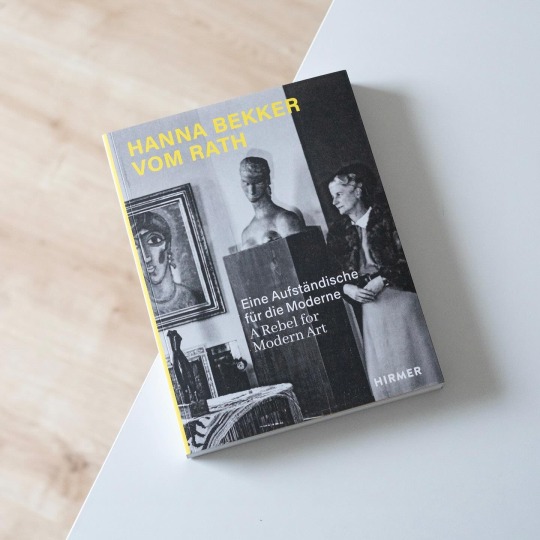
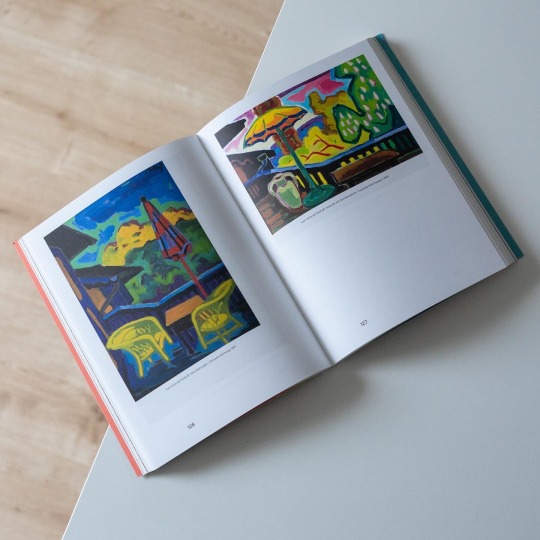
At a time when women were largely confined to household and parenting Hanna Bekker vom Rath (1893-1983) pursued a different path: born into a wealthy, liberal family then Hanna vom Rath neither wanted to fulfill representative functions nor did she want to live the life a traditional housewife. Instead she wanted to become an artists and took painting and drawing lessons with Ottilie Roederstein, Ida Kerkovius and Adolf Hoelzl. But although her dream of a full-time artistic career never materialized she devoted her life to art: at the „Blue House“ in Wiesbaden, the family seat of her, Paul Bekker and their children, she displayed her growing collection of works by Heckel, Kirchner, Lehmbruck or Schmidt-Rotfluff. Together with Alexej von Jawlensky, whom she had befriended around 1926, Schmidt-Rotluff became Bekker's house artist and spent many summer weeks in the „Blue House“, especially after the Nazis seized power in 1933. During these years and despite the danger of being denunciated Bekker began to support „her“ artists by organizing secret exhibitions in her house as well as her apartment in Berlin: her goal was to secure the artists’ economic base by selling their „degenerate“ artworks to progressive collectors. Among the exhibited artists verifiably were Erich Heckel, Willy Baumeister, Ida Kerkovius, Ernst Wilhelm Nay and Karl Schmidt-Rottluff while visitors included sculptor Georg Kolbe, the founding director of the Brücke Museum Leopold Reidemeister as well as Ernst Gosebruch, the forcibly removed former director of the Folkwang Museum. These exhibitions, hosted under precarious conditions, nevertheless lay the foundation for Bekker’s postwar Kunstkabinett in Frankfurt/Main where she showed prewar as well as contemporary art.
Right now and up until 16 June the Brücke Museum in Berlin with „Hanna Bekker vom Rath. A Rebel for Modern Art“ devotes a comprehensive exhibition to her pioneering work and the artists she collected and represented. Alongside it the Hirmer Verlag published the present catalogue which provides a concise overview of Bekker’s many activities: besides featuring a beautiful spreads of her legendary residence and her artworks the included essays elaborate her biography and artist network, her clandestine exhibitions during wartime as well as her women artists network.
This independent and exciting life of hers is very insightfully elaborated and beautifully illustrated in the catalogue that accordingly is highly recommended!
#hanna bekker vom rath#hirmer verlag#art history#art book#exhibition catalogue#gallerist#expressionism#modern art#book
10 notes
·
View notes
Photo
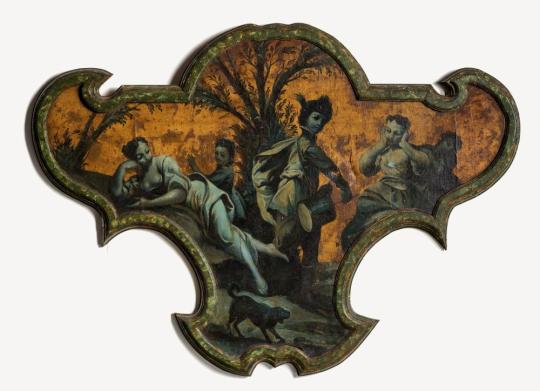



CFA: Raubkunst at the Ringling: A Catalogue in Absentia
A researcher and writer is being sought to investigate the provenance of a quartet of quirkily shaped, sized, and framed 18th Century oil paintings associated with the work of Venetian artist Giovanni Battista Piazzetta (1682-1754). The genre pastoral scenes are in the collection of the John and Mable Ringling Museum of Art in Sarasota, Florida, having been purchased by the museum in 1949. The destination for this research is the collaborative book project Raubkunst at the Ringling: A Catalogue in Absentia, commissioned by Hirmer Verlag and scheduled for publication in 2021. Contributing authors museum curators from Germany, Italy, the United States, and Great Britain.
The works were sold to the Ringling by the German-Jewish art, antique, and textiles dealer Adolph Loewi, who operated galleries in the Veneto as well as New York City and Los Angeles. In 1939 Loewi fled Italy with his family, losing some of his files in the process. Whether the documentation for the Piazzetta-adjacent works was among those documents is not clear; in any case, no record of their provenance exists prior to the Ringling purchase.
Because the Modern Art that had been declared entartete– degenerate – by the Third Reich was seized by the Germans from German government-sponsored museums it is – technically – not considered Raubkunst, stolen art, though certainly the Nazis profited from its sale. Works that were stolen from private owners and collectors, or procured through forced sales, aretruestolen objects, and subject to return to the families of their original owners.
Even in seemingly clear-cut cases, this process can be challenging. In many instances, entire families were murdered their homes or in concentration camps, and no heirs exist to lay claim upon what should have been prized heirlooms. The few remaining survivors of Nazi art theft or their descendants must file official claims with the German government or bring private litigation against museums and auction houses. Claims to works must be substantiated by proof of ownership – a paradox that ends many legal proceedings before they begin since receipts, ledgers, diaries, and documentary stamps were often destroyed, dispersed, or concealed by those who had stolen the artworks in the first place.
Recent books such as Simon Goodman’s The Orpheus Clock: The Search for My Family's Art Treasures Stolen by the Nazis (2016) and The Lady in Gold: The Extraordinary Tale of Gustav Klimt's Masterpiece, Portrait of Adele Bloch-Bauer (2015) by Anne-Marie O’Connor detail the eventual triumph of the resourceful Goodman and Altmann families pitted against adversaries in museums and galleries over the course of lengthy and expensive court battles. Some cases turn less flamboyantly but more emotionally. The Austrian art dealer Lea Bondi-Jaray lost her beloved Portrait of Wally, a 1912 painting by her friend Egon Schiele, in the Anschluss in 1939. She went to her grave fighting to have the painting returned from private gallerist Rudolph Leopold who had acquired the painting in collusion with the Austrian government in 1954. Bondi-Jaray’s family continued the battle, eventually taking on no lesser adversaries than Ronald Lauder, the Museum of Modern Art, and Austria’s Leopold Museum. The case turned when the family produced pre-war photographs of Portrait of Wallyin Bondi-Jaray’s Vienna apartment, convincing the United States Customs Service to seize the painting and United States District Court for the Southern District of New York Judge Loretta A. Preska to allow the case to proceed to trial. The Leopold Museum settled with the family in 2010.
Because of their appealingly peculiar nature and the seeming completeness of the grouping of four, it seems likely that the Piazzetta workshop paintings came from a private collection. But whose? The task of the writer-researcher who takes on this investigation will be to unravel this mystery. The outcome may be as simple as a lost receipt establishing a chain of custody that puts the Ringling in the clear, or as profound as reuniting the quartet with a family who thought them lost decades ago.
I began this project in 2016 when I discovered two woodblock prints by the Blaue Reiter artist Franz Marc (1880-1916) in the Ringling collection, identified them as Raubkunst, and eventually traced them back to their original owners in Stuttgart and Mannheim. My findings were accepted as a “closed case” this past February by the Commission for Looted Art in Europe. So the investigation has since expanded in scope, to say the least. I would welcome collaboration with, as well as questions and advice from, researchers and connoisseurs with expertise in both provenance, authentication, and 18th Century art. Please contact me at jeanmarie.carey [at] gmail.com.
Images: Circle of Giovanni Battista Piazzetta 1682 -1754), Pastoral Scenes, c. 1750.Oil on canvas; (approximately 56.5 x 92.7 cm).The John and Mable Ringling Museum of Art, Object numbers: SN627-SN630.
– Jean Marie Carey
#italian art#piazzetta#ringlingmuseum#john and mable ringling museum of art#raubkunst#provenance#research#museum#collections#florida#lootedart#Giovanni Battista Piazzetta#franz marc#commission for looted art in europe#catalogue#writing#cfa#cfp#18th Century#art#art history#sarasota
97 notes
·
View notes
Text
Das Schokoladenmädchen - Die Story eines der berühmtesten Gemälde der Kunstgeschichte
Das Schokoladenmädchen – Die Story eines der berühmtesten Gemälde der Kunstgeschichte
Von Daniel Thalheim
So genau ist es nicht bekannt wie viele Reproduktionen des „Schokoladenmädchens“ in den Wohnungen und Häusern weltweit hängen. Hinzu kommen unzählige Abhandlungen und Schriften, die sich um das Mädchen mit dem Kakaotöpfchen drehen. Es gibt aber nur ein Original, das im 18. Jahrhundert von Jean Étienne Liotard gemalt wurde.
Warum das Schokoladenmädchen noch immer populär ist
E…
View On WordPress
#Dresdner Gemäldegalerie#Francesco Graf von Algarotti#Hirmer Verlag#Jean Etienne Liotard#Rosalba Carriera#Schokoladenmädchen#SKD#Staatliche Kunstsammlungen Dresden#Stoubmench#Stubenmädchen
0 notes
Photo










Maiolica in Renaissance Venice
Ceramics and Luxury at the Crossroads
Karine Tsoumis - Edited by The Gardiner Museum, Toronto
With a contribution by Christopher Maxwell
Hirmer Verlag, München 2021, 200 pages, 175 color plates, 19.69x24.77cm., ISBN 978-3777435770
euro 52,00
email if you want to buy [email protected]
Maiolica in Renaissance Venice offers an unprecedented exploration of maiolica in the Serenissima. Versatile and receptive to all forms of decoration, the medium of maiolica, or tin-glazed earthenware, offers a unique point of entry into Venice's diverse material world composed of objects obtained through Mediterranean trade and made in the city. The volume explores maiolica's conversations with artefacts ranging from Islamic metalwork and Chinese porcelain to Venetian lace and glass. Other important themes include production in the potter’s workshop and the consumption and function of objects in the homes of the elite. A work of deep scholarship that is also lavishly illustrated, this publication will appeal to art historians and lovers of Venice alike.
13/11/21
orders to: [email protected]
ordini a: [email protected]
twitter: @fashionbooksmi
instagram: fashionbooksmilano, designbooksmilano tumblr: fashionbooksmilano, designbooksmilano
#Maiolica#Renaissance Venice#The Gardiner Museum Toronto#Serenissima#decorative arts exhibition catalogue#Islamic metalwork#Chinese porcelain#Venetian Lace#Venetian Glass#fashionbooksmilano
20 notes
·
View notes
Text

The Leslie-Lohman Museum of Art in New York is the only dedicated LGBTQIA+ art museum in the world with a mission to exhibit and preserve LGBTQIA+ art and foster the artists who create it.
In the Preface for the publication entitled “Queer Holdings,” the editors Gonzalo Casals and Noam Parness write that “the act of presenting, archiving, and collecting queer art is still a political act. In this context, there is a renewed sense of urgency for queer visibility, but this context simultaneously opens opportunities for critical conversations and visualizations toward more expansive forms of visibility.”
This sense of urgency seems even more prevalent in today’s political climate, and in the time of growing hostility and violent crimes against many LGBTQIA+ communities. We stand together in solidarity with LGBTQIA+ communities here at Harvard and beyond.
November 20th was International Transgender Day of Remembrance as a day to memorialize those who have been murdered as a result of transphobia. Cassils, who is on the cover of the publication, is a transgender performance artist. They make their body the material for a form of social sculpture to address the history of LGBTQI+ violence, representation, struggle and survival.
Image: Cropped image from the front cover. Cassils. “Becoming an Image Performance Still No.4, National Theater Studio, SPILL Festival, London 2013”, C-print. 22”x30”
Queer holdings : a survey of the Leslie-Lohman Museum collection Edited by Gonzalo Casals and Noam Parness. Munich : Hirmer Verlag, [2019] 264 pages : illustrations (some color), portraits ; 26 cm English HOLLIS number: 99154382110903941
#Queer#Leslie-LohmanMuseumofArt#Transgender#Transgenderartist#LGBTQ#LGBTQartists#LGBTQ+#LGBTQI#LGBTQI+#LGBTQIartists#LGBTQIA+#Cassils#HarvardFineArtsLibrary#Fineartslibrary#Harvard#HarvardLibrary#harvardfineartslibrary#fineartslibrary#harvard#harvard library#harvardfineartslib#harvardlibrary#photography#transgender day of remembrance#stop hate#stop violence
41 notes
·
View notes